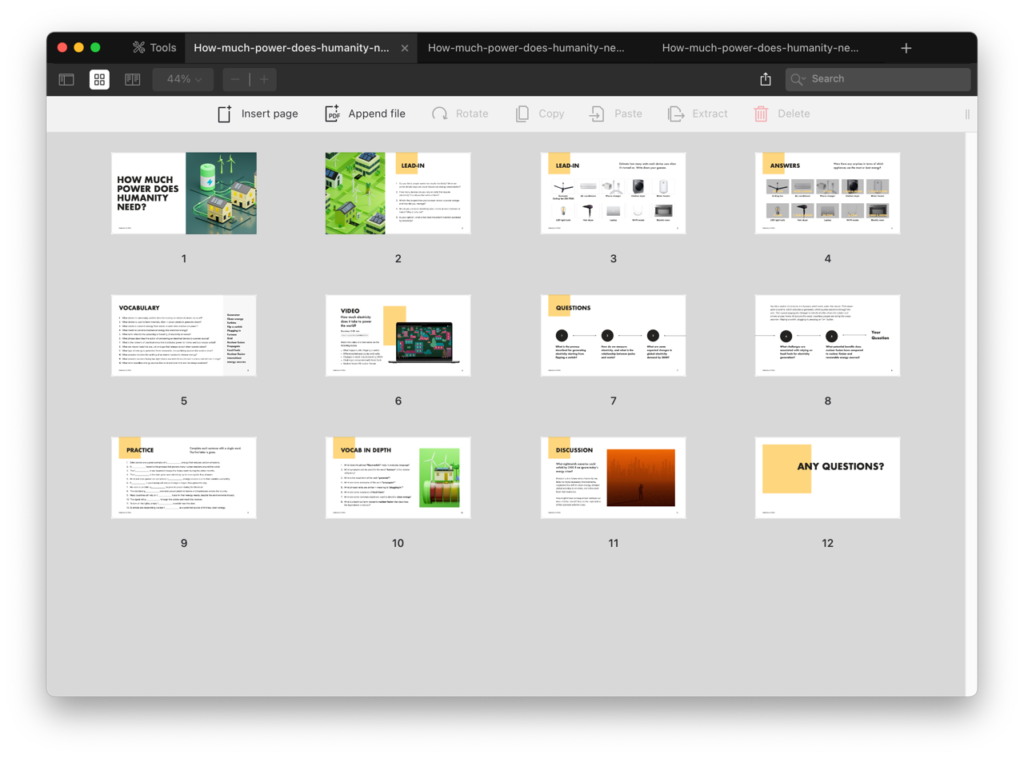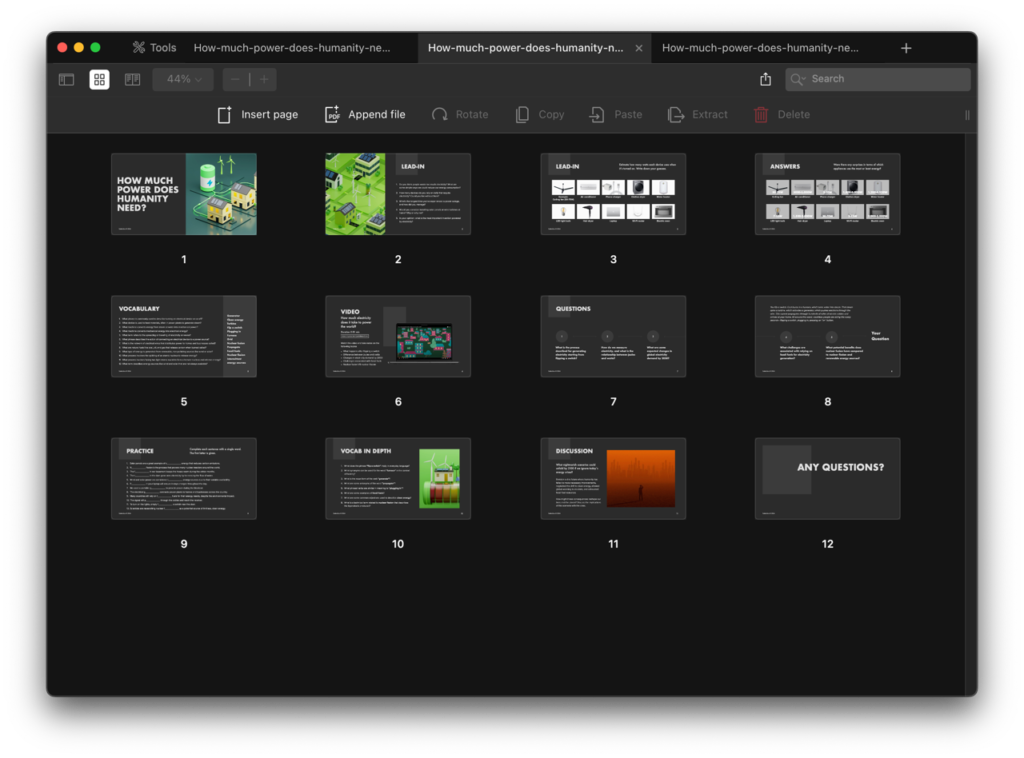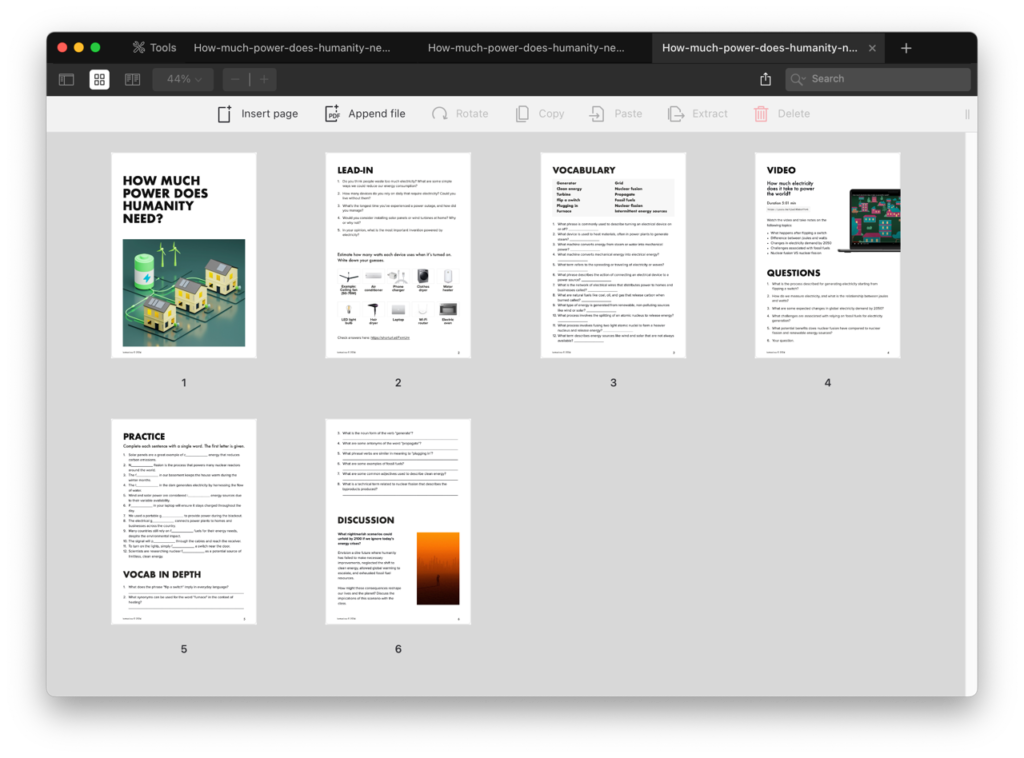This C1 ESL lesson explores humanity’s energy needs and the challenges we face in meeting them. Students will analyze the current reliance on fossil fuels and the urgent need to transition to clean energy sources. Through engaging discussions, they will envision potential futures based on our energy choices, considering the impacts of climate change and resource depletion. By examining technological solutions like nuclear fission and fusion, students will critically evaluate the path forward for sustainable energy.
| Type | Level | Vocabulary | Video Duration | Lesson Time |
| Regular Lesson | C1 /Advanced | 12 words | 5:01 min | 60 min |



Vocabulary
- Flip a switch
- Furnace
- Turbine
- Generator
- Propagate
- Plugging in
- Grid
- Fossil fuels
- Clean energy
- Nuclear fission
- Nuclear fusion
- Intermittent energy sources
Contents
- Lead-in
- Power consumption
- Answers
- Vocabulary
- Video
- Practice
- Vocab in depth
- Discussion
Lead-in, Power consumption
This advanced C1 ESL lesson begins with five thought-provoking questions designed to gauge students’ knowledge of energy sources and electricity. Topics include energy waste, consumption, power outages, solar panels, and wind turbines. Next, students will examine a list of 10 household appliances and estimate the wattage each device consumes when turned on, using a provided example as a guide. They will record their guesses and engage in discussions with classmates, with answers available on the following page for reference.
Vocabulary
The vocabulary section focuses on reading and answering questions related to key terms from the video. Students will explore 12 essential words connected to energy sources and power consumption, including terms like generator, clean energy, power grid, fossil fuels, flip a switch, turbine, propagate, nuclear fusion, and nuclear fission. This exercise enhances their understanding of the concepts while expanding their vocabulary.
Video, Questions
The next part of the lesson involves watching a five-minute video titled “How Much Electricity Does It Take to Power the World.” Students are required to watch the video attentively and take notes on key topics, including what happens after flipping a switch, the differences between joules and watts, projected changes in electricity demand by 2050, challenges associated with fossil fuels, and a comparison of nuclear fusion and fission. After viewing, students will answer five questions based on their notes, so it’s highly recommended to encourage them to take detailed notes to facilitate their responses.
Practice, Vocabulary in depth
There are two vocabulary practice pages in this lesson. The first page features 12 sentences that students must complete with a single word, with the first letter provided. All the words are related to the vocabulary discussed in previous sections and the video. The second page, titled “Vocabulary in Depth,” requires students to explore the meanings of the words, along with their additional forms, synonyms, antonyms, examples, and collocations. This section can be challenging, so be sure to allocate enough time for students to complete it thoroughly.
Discussion
The final page of this lesson features a group discussion that can be adapted by pairing students, conducting a larger group conversation, or incorporating any other relevant activities. This discussion invites students to imagine a nightmarish scenario of what could happen by 2100 if we ignore the energy crisis. Encourage them to share their thoughts and examples as they envision the worst possible future, fostering a deeper engagement with the topic.
